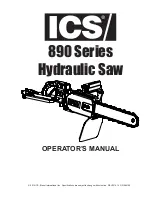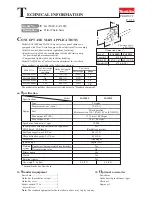
Tel: 01246 561 520 | www.recordpower.co.uk
35
14. Maintenance - Cont.
The Table Insert
The table insert on a bandsaw is a consumable item (Fig.
14.8) and will therefore need replacing periodically. This
procedure should be carried out with the bandsaw blade
removed. To replace the table insert simply push the old
insert out from underneath the table and fit the new one
into position.
The Bandwheel Tyres
The bandwheels on this machine have rubber tyres fitted
to the outer rim of the wheel (Fig. 14.9) to protect the set
of the blade when in use, also to provide drive and to stop
the blade slipping. As part of your regular service schedule
inspect the tyres for wear and damage and replace if
necessary. Again this is a consumable part of the bandsaw
and will need replacing periodically depending on usage.
First remove the blade from the bandsaw, then remove
the bandwheel. Gently ease the existing tyre from the rim
taking care not to damage the bandwheel. To fit the new
tyre it is a good idea to heat the tyre first in hot water,
this softens the rubber up and makes it easier to stretch it
over the bandwheel. The tyres before stretching are much
smaller than the bandwheel and a good deal of stretching
is required to make them fit. It is advisable to get help
from a second person who can insert the wheel into the
tyre while it is fully stretched.
The Bandwheel Bearings
The bandwheel bearings are sealed for life units which will
need replacing periodically depending on usage.
To replace the bearings; first ensure that there is no blade
fitted. Now remove the circlip from the hub and remove
the bandwheel (circlip pliers will be required to carry out
this operation), you will notice that there are two separate
bearings fitted in the hub pressed up against each other.
Take a brass drift (or similar) and tap one of the bearings
out, the second bearing should now be able to be
pushed out.
When fitting the new bearings; position by hand in the
wheel hub and tap in until the bearing seats against the
ridge in the casting (Fig. 14.10).
Fig. 14.8
Fig. 14.9
Fig. 14.10










































